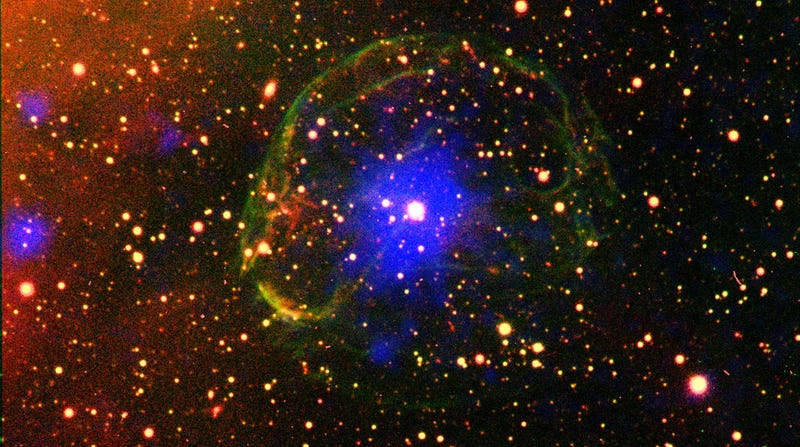
The European Space Agency is synching up atomic clocks with distant, rapidly spinning neutron stars, called pulsars, according to a release.
The effort, led by a private company called GMV alongside the University of Manchester and the UK’s NPL National Physical Laboratory, is used to advance the clocks used in the Galileo global satellite navigation system—like GPS, but for Europe. The pulsar-based “PulChron” system combines the long-term stability of pulsar measurements with the precision of vibrating atoms to create more accurate clocks.
Advertisement
Physicist Jocelyn Bell Burnell discovered pulsars in 1967, when she noticed a radio signal varying with a 1.34-second period in data from the Interplanetary Scintillation Array at the Mullard Radio Astronomy Observatory. Today, we know that pulsars are neutron stars, the small but incredibly dense collapsed centers of larger stars, which spew a beam of radiation while they rotate with baffling regularity.
Though interesting on their own, scientists now use the regular spins of pulsars as tools, observing arrays of them to hunt for gravitational waves, for example. And their precise frequency makes them excellent time-keepers.
A clock, after all, is just something that ticks with well-understood intervals that can be used for measuring time. PulChron sources its measurements from five radio telescopes comprising the European Pulsar Timing Array, which observe 18 pulsars. Atomic clocks, meanwhile, come up with a characteristic frequency that makes up their “tick” by perfectly tuning a laser to excite an atom, then translating the laser’s frequency into the usable interval.
Advertisement
But certain atomic clocks, such as those based on hydrogen excited by microwave lasers, can drift over longer intervals without another system to correct them. The clocks used by Galileo require re-synchronization with ground-based atomic clocks every few hours. The PulChron project hopes to add the longer-term stability of pulsars in order to steer the atomic clocks, both for Galileo and potentially to contribute to the setting of Coordinated Universal Time, or UTC.
It’s just a demonstration for now, according to an ESA fact sheet. Nor is this the first pulsar clock—but it’s neat to see some of the largest and smallest time-keepers in the universe functioning together to help us humans get around.













